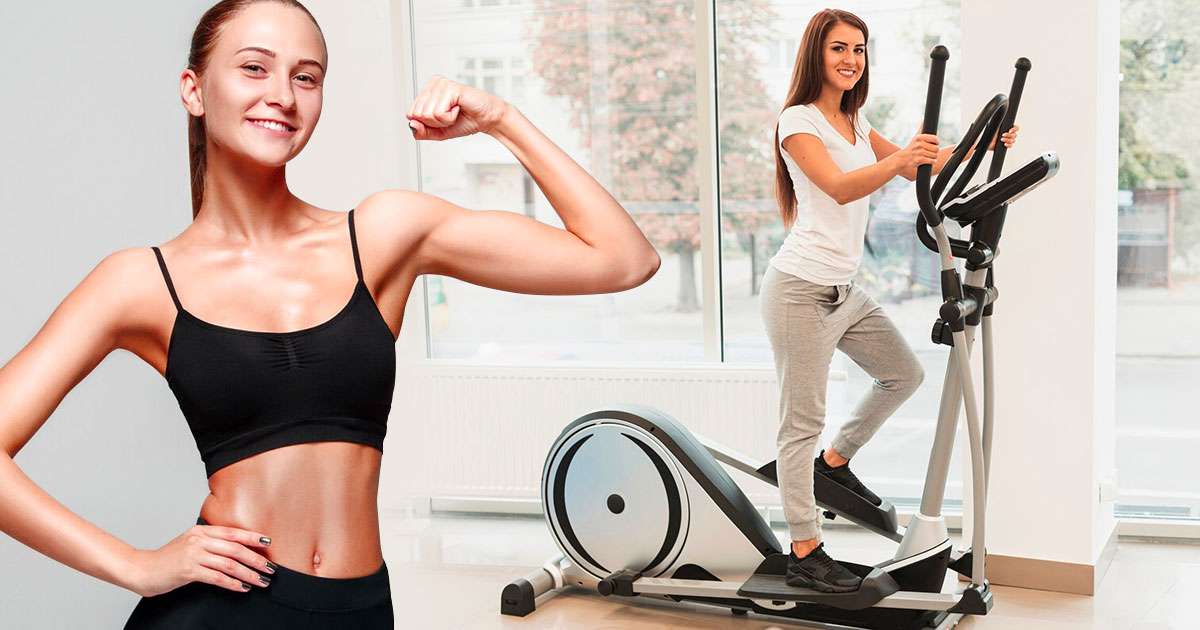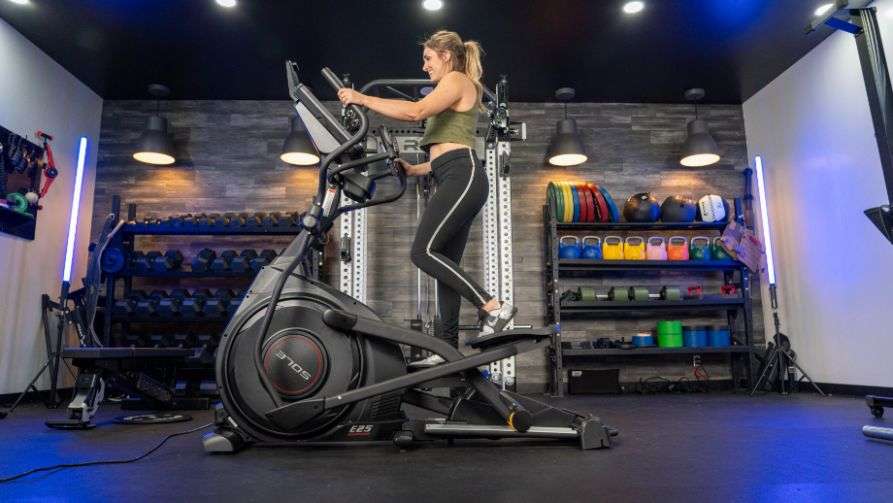What types of muscles does an elliptical work?

An elliptical machine offers a gentle yet effective cardiovascular workout. It enhances overall fitness by boosting endurance and toning both upper and lower body muscles. This equipment is highly favored in fitness facilities and is also a preferred option for home fitness routines. Let’s explore the reasons behind its popularity and the kind of muscles an elliptical can work.
What parts of the body does the elliptical work on?
Elliptical machines are known for engaging approximately 80% of the body’s muscles, provided proper form is maintained. Correct usage involves avoiding excessive up-and-down movements and maintaining an upright posture by engaging the core muscles and envisioning a vertical pull from the crown of the head. Keep toes facing forward and ensure knees are aligned directly in front (not turned inward or outward). Following these guidelines, here are the muscle groups targeted during elliptical workouts:
Upper Body
The elliptical is good for muscles in the upper body, but it depends on how you utilize the handles. Pushing the handles forward primarily targets the chest, front shoulder, serratus anterior, and triceps, while pulling them backward emphasizes the lats, rhomboids, and traps, aided by the biceps. However, many users either allow their arms to move freely or only push the handles forward, neglecting the backward motion. In the latter case, only the chest, shoulders, and triceps are engaged.
To involve more upper body muscles, it’s essential to push and pull on the handles deliberately. Muscles worked include the chest, front shoulder, lats, serratus anterior, rhomboids, traps, triceps, and biceps.
Lower Body
No matter how you use the handlebars, your legs will do most of the work. Your glutes, hamstrings, quads, and calves will all be working. When you push your leg forward, your quads and hip flexors bend your knee and lift your leg. As your leg moves back, your glutes and hamstrings push you forward. Throughout this motion, your abductors (like your glute medius and minimus) and adductors (inner thighs) stabilize your pelvis, while your calves and tibialis anterior stabilize your ankle.
Pro tip: If the machine has an incline adjustment, increase it for more glute and hamstring activation. Research shows a nine-degree incline can significantly boost muscle engagement compared to walking on a flat surface. You can expect similar benefits on an elliptical. Some muscles the elliptical works include quads (including hip flexors), glutes (maximus, minimus, medius), hamstrings, inner thighs, calves, and anterior tibialis.
Core
During an elliptical workout, your core plays a crucial role in stabilizing your body, keeping your posture in check, and powering your arms and legs. When we mention “core,” we’re referring to all the muscles that work together to stabilize your spine, not just the abs. The key players here include the muscles around your spine, like your abs, obliques, and lower back. When these muscles contract together, it forms what’s called abdominal bracing, which helps protect your spine from potential damage. Think of it like holding a strong, steady plank position while your limbs are in motion.
Additionally, your core includes the hip flexors and glutes, which stabilize the pelvis. This stability is crucial for maintaining a healthy spine during pedaling, preventing excessive arching of the lower back, and reducing the risk of injuries. Muscles worked include the rectus abdominis, transverse abdominis, external and internal obliques, quadratus lumborum, and erector spinae.
Can an elliptical machine build muscle?
Indeed, aerobic exercise, including elliptical workouts, can contribute to the development of lean muscle. A review of research published in the Exercise Sport Science Review highlights substantial evidence supporting muscle hypertrophy, or growth, through cardio activities like elliptical training. However, it’s important to note that while elliptical workouts enhance muscular endurance and allow for resistance adjustments to increase challenge, they shouldn’t be mistaken for strength training sessions.

What are the drawbacks?
Elliptical machines offer a safe way to do cardio and engage many muscles, but they have drawbacks. They can get boring, but you can spice things up with entertainment. However, the real issue is that they may not fit everyone well. Ellipticals are typically designed for average-sized users, so if you’re very tall or short, you might feel awkward on one.
Unless you’re buying a home gym with adjustable options, you’re limited to what’s available at the gym. That’s why, trainers wouldn’t insist on using an elliptical if it didn’t feel right for you. You can try it, but there are other options like rowing or cycling for adjustable low-impact workouts, or a treadmill or stair stepper for more freedom of movement.
How long should you use the elliptical?
The duration of your elliptical workouts should align with your fitness objectives. Typically, it’s recommended to engage in at least 150 minutes of cardiovascular activity weekly, with a maximum of 300 minutes. To meet the minimum requirement, aim for 30 minutes of moderate-intensity exercise five days per week. If time is limited, increasing the intensity and reducing the duration to 20 minutes can be effective. Opting for higher intensity workouts not only saves time but also enhances cardiovascular fitness and increases calorie expenditure efficiently.
Work on Those Muscles with an Elliptical Machine
Incorporating elliptical workouts into your fitness routine can yield significant benefits for your overall health and well-being. From engaging multiple muscle groups to providing a safe and effective cardiovascular workout, the elliptical offers a versatile option for individuals of varying fitness levels. Whether you’re aiming to enhance endurance, tone muscles, or simply diversify your exercise regimen, the elliptical machine presents a valuable tool.
However, it’s essential to consider factors such as proper form, individual fit, and alignment with your fitness goals. Remember, finding the right exercise equipment tailored to your needs is key to maintaining consistency and achieving long-term success on your fitness journey. So, explore the possibilities, listen to your body, and discover how the elliptical can contribute to your path towards a healthier and stronger you.

